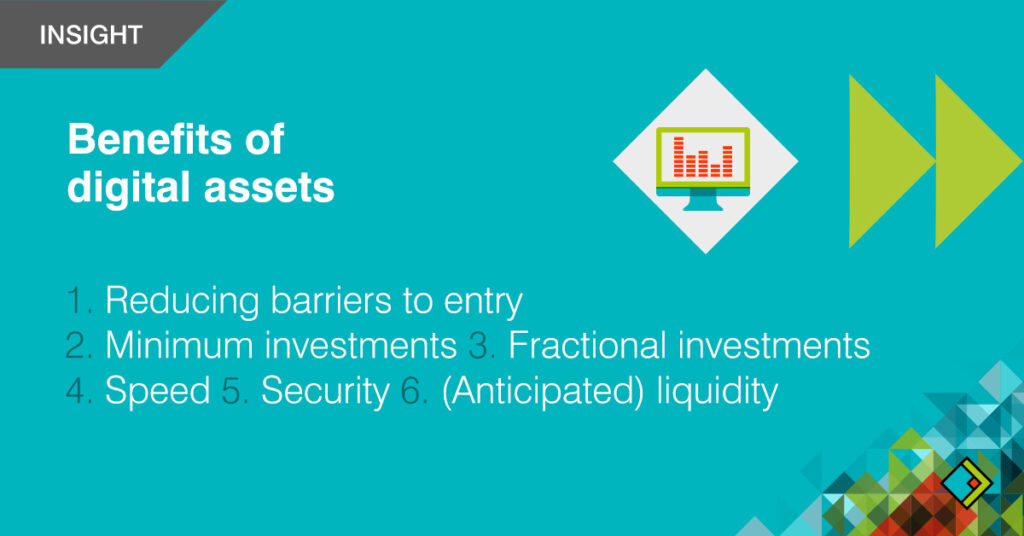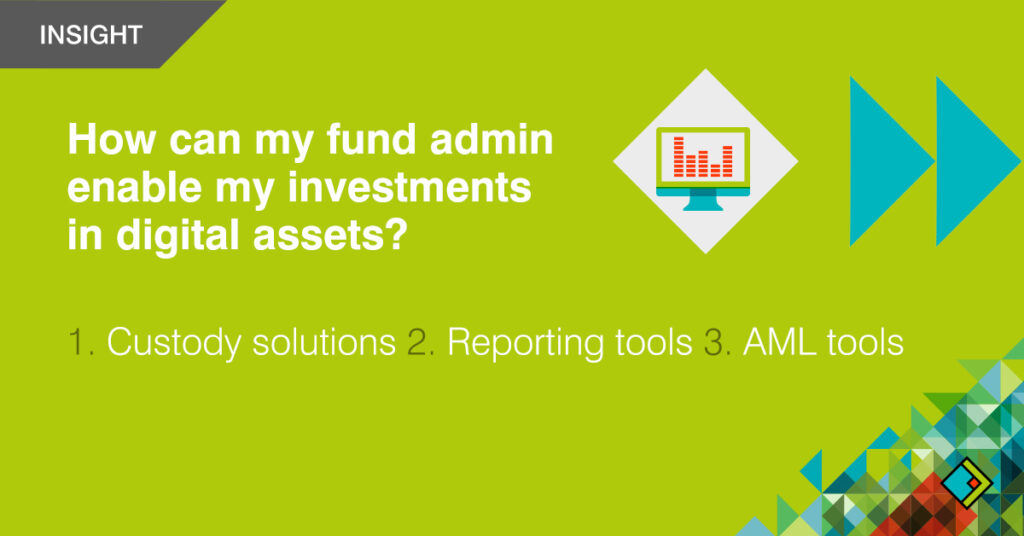In the context of funds developing compelling strategies and seeking the best-performing assets to gain optimal returns, digital assets are – put simply – just another asset. Or are they?
A scan of investable digital assets shows that while some may appear as near-new assets, many fall into the same broader classifications we are already familiar with, such as currency or equity.
With real-world (‘non-native’) assets essentially being repackaged into this newer digital format, digital-only (‘native’) assets are delivered using the same new technology, but without a real-world physical counterpart, meaning inherent value is typically in scarcity or utility, such as providing voting or access rights.
For emerging asset types without pre-existing classifications, upcoming European MICA regulation is helping to bring clarity to asset classification and which subsequent treatments may apply. Fortunately, In the case of securities, they look to be classified and treated in the same way as they are today, despite being delivered digitally.
Sound familiar? Same thing, different package? Think of the progression from letter to email – same message, different delivery.
Digitalisation brings time and cost efficiencies, whether in the initial issuance of an asset (appealing to the issuer), or in terms of the future distribution and transactional process (appealing to both issuer and purchaser).
For the issuer, the ability to quickly and easily represent and administer assets makes the process of issuing a digital asset more attractive than alternative routes – particularly when comparing an IPO versus issuing private equity. To draw on a key term from the previous article, significant time and cost-savings can be obtained through smart contracts – secure automation to process various workflows based on pre-defined steps.

Digital assets aren’t just a fashionable alternative; they present fund managers with a number of enviable benefits:
With this in mind, the fundamental reasoning to purchase an asset remains largely unchanged: do the characteristics of the asset align with my investment objectives? And if so, what tools do I need to facilitate the transaction?

There are several tools needed to support digital asset investments. These include:
Custody solutions: Digital assets need to be held in a secure manner. Custody solutions provide a way to store and manage digital assets safely.
Reporting tools: Reporting tools help investors to track investment performance and share data with LP’s.
AML tools: In such a heavily regulated market, AML solutions have evolved to source supporting data to make informed AML assessments. Key players are firms Elliptic and Chainalysis, building vast proprietary knowledge bases to link AML trigger-events with publicly available transactional data. By complimenting existing KYC and AML processes, buyers and sellers can quickly determine compliance for every transaction.
When looking to the future, it’s likely more a case of ‘will’ over ‘might’. In 2022, the World Economic Forum estimated the value of tokenised global illiquid assets will reach $16 trillion (10% of global GDP) by 2030, with early growth in unlisted assets as owners and investors seek greater flexibility, efficiency and liquidity.
At their current state of maturity, emphasis still remains on the ‘digital’, however, you don’t have to look too far ahead before digital will become the norm, and it’s just another asset.
As a result, while early adopters may be venturing into digital assets now, it should be firmly on everyone’s radar for the coming years, with particular motivations for earlier adoption below:
Diversification: Digital assets can be a good way to diversify a portfolio, as they are not necessarily correlated with traditional asset classes such as stocks and bonds. This means that they can help to manage portfolio risk and volatility.
Efficiency: As a manager presented with an investment opportunity, would you prefer:
Easy decision?
Instantaneously exchanging digital currencies for digital assets is known as delivery-vs-delivery (you may also have heard the term ‘atomic swap’). One smart contract manages both sides of the transaction, removing counterparty risk, reconciliations and escrow.
(Anticipated) Liquidity: As assets become digitally represented, listing and purchasing assets via digital platforms becomes more transparent and cost effective to administer using pre-defined smart contracts to govern and automate transfer conditions. Traditional assets become easily divisible into smaller denominations, particularly helpful for rebalancing, where offloading an entire asset (hotel, shopping mall etc) would be inefficient. Note: Though technically possible, a critical mass of investors is required to bring a marketplace to life.
Backing the underlying technology: As early-stage investors into key market infrastructure, VC’s in particular are witnessing first-hand the use of digital assets to raise capital and represent equity, therefore becoming early adopters of supporting services. As the underlying technology of digital assets, blockchain has the potential to disrupt a number of industries.
As a combination of new and existing asset classes, digital assets may bring efficiencies in their new digital form. However, any sound investment decision will continue to be based on an assessment of the underlying asset.
Aztec Group recognises the ever-growing and exciting opportunity for clients to integrate digital assets into funds, be it brand new assets or modern, digitalised versions of existing assets (private equity tokens, for example).
As such, we’re taking an active role with our clients to investigate and test the required enabling technologies, while also contributing to define standards for the wider industry (see our recent press release about joining industry association ‘ERC3643’ to define and drive tokenisation standards).
Valuable insight gained from recent client collaborations is fundamental to the development of new, digital asset services, covering custody, AML and reporting, helping ensure that as the bright alternative, Aztec continues to offer a streamlined and market-leading service that helps our clients meet their objectives.
If you would like to discuss how digital assets may fit into your portfolio/s, please contact Simon Ware of the Aztec ‘Explore’ Innovation team.


To discover for yourself what makes us the bright alternative and how we can support, please contact Simon Ware, our Associate Director - Innovation.